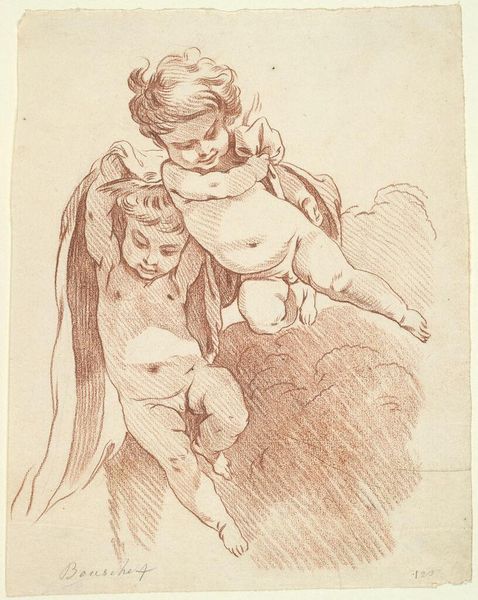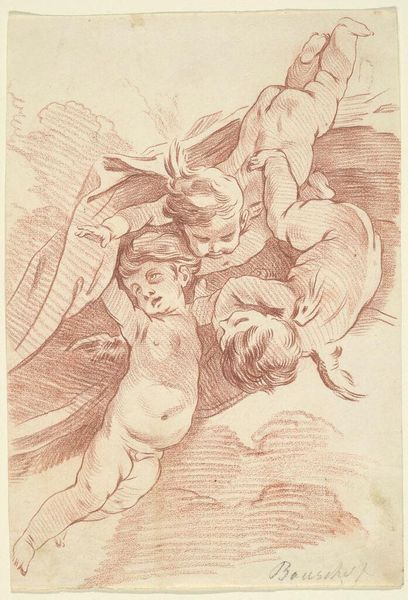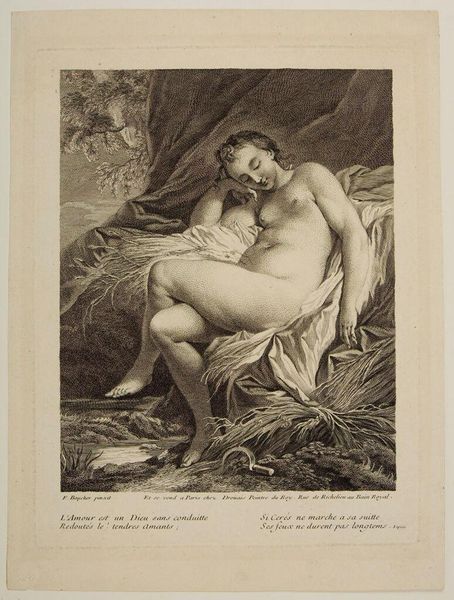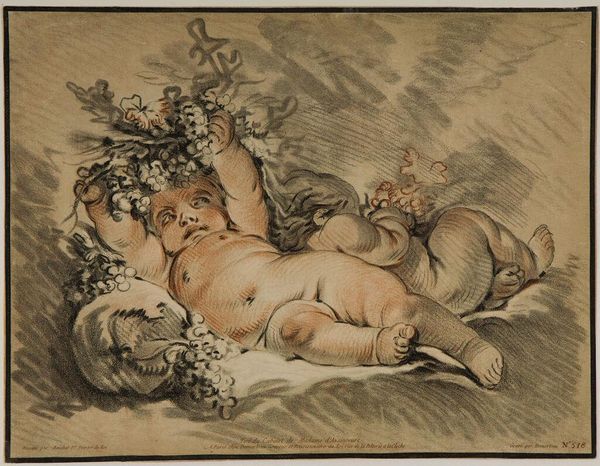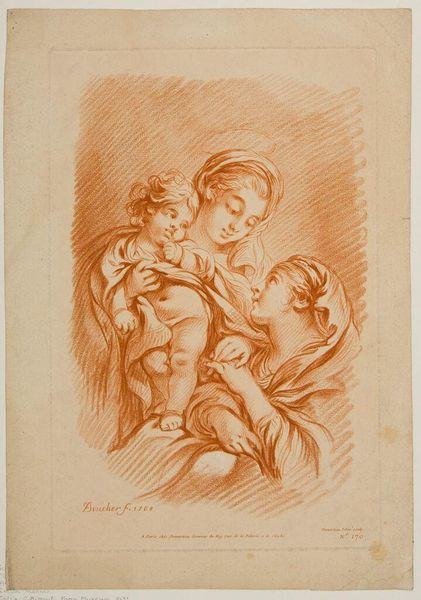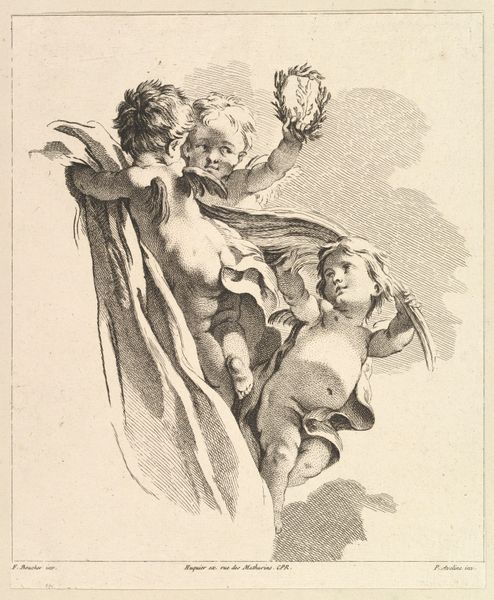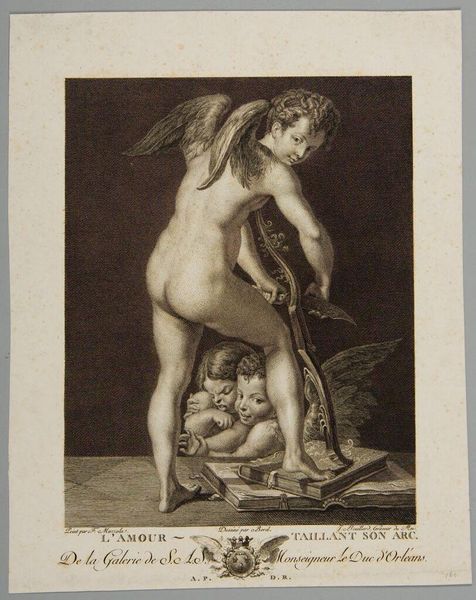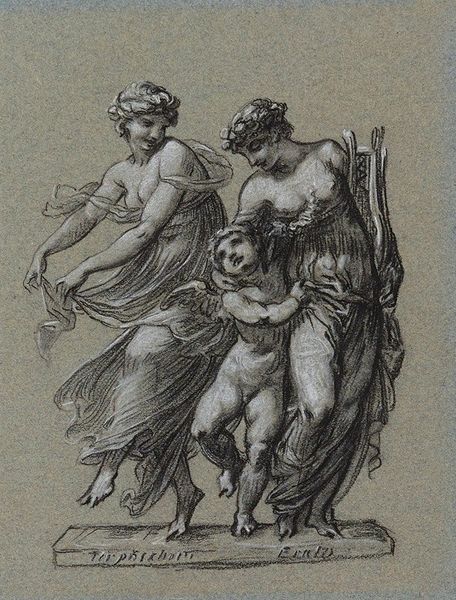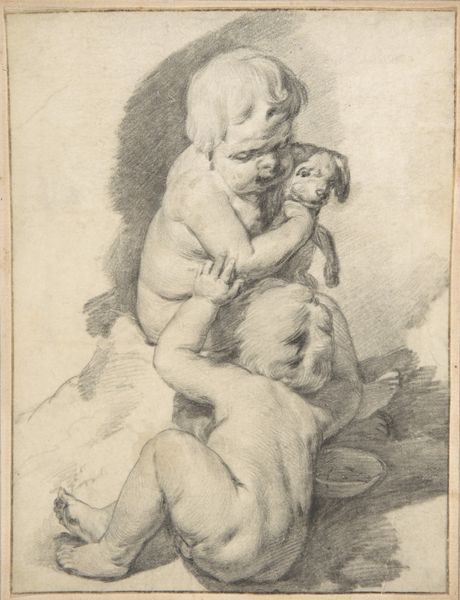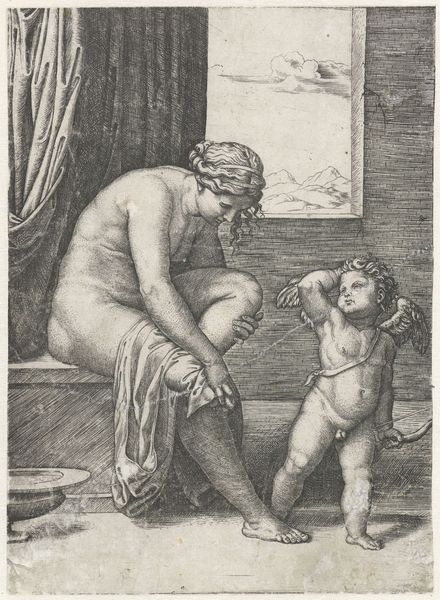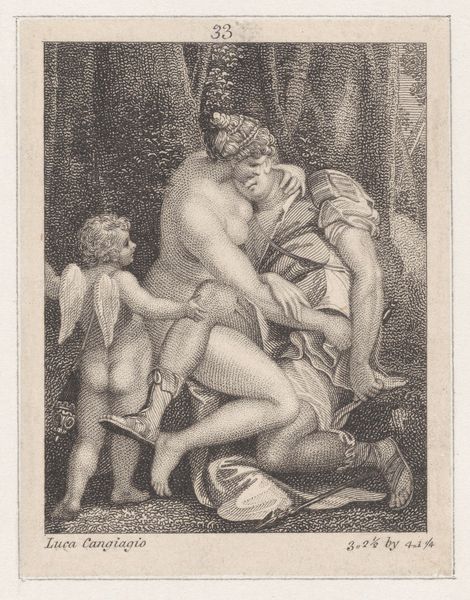
drawing, pencil
#
portrait
#
drawing
#
figuration
#
pencil drawing
#
intimism
#
pencil
#
surrealism
#
portrait drawing
#
nude
#
portrait art
#
rococo
Dimensions: height 336 mm, width 214 mm
Copyright: Rijks Museum: Open Domain
Curator: The tenderness of the subjects strikes me immediately. They seem swathed in comfort and serenity. Editor: That’s an excellent starting point. We’re looking at "Venus en Cupido," or "Venus and Cupid," a pencil drawing created around 1767 by Louis Marin Bonnet. It’s currently housed in the Rijksmuseum. I see this drawing as deeply embedded in its time period. Curator: The Rococo period? Editor: Precisely. And we need to consider how pieces like this participated in the social theater of 18th century France. Bonnet was celebrated for his skill in mimicking other mediums, especially painting, through etching and crayon manner prints. He expertly captured the soft sensuality that defined Rococo aesthetics, didn’t he? Curator: He truly did. I find myself wondering about the message communicated through Venus’s positioning and expression here. The intimate portrayal of the mother-child bond, draped in flowing fabrics, almost feels like a reinforcement of traditional gender roles. There’s a sort of idealized domesticity, wouldn’t you say? Editor: Definitely. The image plays into expectations. Venus as the ultimate embodiment of love and beauty, yet seen here primarily through the lens of motherhood. It speaks to the values of the period, though some might argue, reduces her complexity to these roles. It definitely served a public function that has political consequence to our current point in time. Curator: So while the technical skill is undeniable, its participation in upholding existing power structures complicates our understanding. How do we view this technical beauty now, knowing it perpetuates limited perspectives? Editor: That's the core question. A museum’s role is to present that friction: celebrating the artistic achievement while actively exploring its context and social ramifications. Curator: Yes, seeing this drawing not just as a piece of art, but as a socio-historical object to be examined through many lenses, really changes how we approach it. Editor: Indeed. Hopefully, visitors will feel empowered to critically engage with artworks and question how they reflect the eras in which they were produced.
Comments
No comments
Be the first to comment and join the conversation on the ultimate creative platform.
